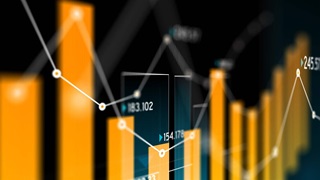U.N. Plastics Treaty Must Include Provisions to Tackle Microplastics
Particles shed by tyres, paint, household goods and more are a growing source of plastic pollution

Editor's Note: This article was updated July 18, 2023 to correct the name of the Intergovernmental Negotiating Committee.
As worries about plastic pollution have mounted in recent years, policymakers, businesses and consumers have begun to act—mostly with a focus on plastic bottles, bags and other items commonly seen in the environment. An overlooked source of plastic pollution comes from microplastics, tiny pieces of plastic less than 5 millimetres in size. Their growing presence in the natural world is cause for concern.
This was the topic of a side event that I co-organized and moderated at the second session of the Intergovernmental Negotiating Committee on Plastic Pollution (INC-2), held from 29 May to 2 June in Paris. Mandated by the United Nations Environment Assembly, the INC is tasked with developing an international, legally binding agreement—a so-called plastics treaty—to curb plastic pollution. The side event’s purpose was to raise awareness about microplastics; to highlight current knowledge gaps on the sources, movement and impacts of microplastic pollution, and methods to prevent it; to spotlight global activities to monitor and reduce microplastic pollution; and to underline key considerations for the INC as it continues to develop a plastics treaty.
Scientists are learning more about the growing sources of microplastic pollution as new data becomes available. Pew’s 2020 report “Breaking the Plastic Wave” estimated that 4.4 million metric tonnes of microplastic pollution from tyres, textiles, pellets and personal care products leaked into the environment in 2019, with tyres being the largest contributor. Fortunately, the report showed that current technologies could reduce pollution from these sources by almost half by 2040, and called for innovation and new policies to solve the remaining problem.
A more recent report, “Plastic Paints the Environment,” published in 2022 by the Switzerland-based consultancy Environmental Action, now estimates paint to be the largest source of microplastic pollution, at 4.7 million metric tonnes in 2019. This finding nearly doubles the amount of microplastic pollution previously estimated and underscores the prevalence of microplastics in the environment—including from sources we have not yet quantified.
Other speakers on the panel included Margaret Spring from the Monterey Bay Aquarium; Stefano Aliani from the National Research Council of Italy; Alessio Gomiero from NORCE Norwegian Research Centre; Maria Westerbos from the Plastic Soup Foundation and Plastic Health Council; Sian Sutherland from A Plastic Planet, PlasticFree, and Plastic Health Council; and Marc Metian from the International Atomic Energy Agency.
While the presentations covered a broad spectrum of topics, from human health impacts to global monitoring systems, all speakers agreed that the plastics treaty must include interventions that address the scope and scale of the microplastics problem.
Even with the actions that various sectors of society have initiated to reduce plastic pollution, the problem is growing at an alarming rate. Thankfully, so is the science needed to address this challenge—with microplastics and larger pieces of plastic. Addressing microplastic pollution should be one of the treaty’s core obligations, and the agreement should include mandatory control measures to reduce emissions of both intentionally added microplastic ingredients and the unintentional release of microplastics.
As part of this, the INC should develop flexible policies that can evolve to address emerging sources of microplastic pollution and account for new, valid science as it becomes available.
The plastics treaty is a once-in-a-lifetime opportunity to protect our planet from the ever-increasing threats of macro- and microplastics. Pew will continue to engage with stakeholders and policymakers at the INC to support efforts to develop an ambitious, evidence-based approach for reducing plastic pollution, including from microplastics, and ensure that this less visible aspect of plastic waste remains firmly in the spotlight.
Leah Mupas Segui works on The Pew Charitable Trusts’ preventing ocean plastics project.
MORE FROM PEW
Explore Pew’s new and improved
Fiscal 50 interactive
Your state's stats are more accessible than ever with our new and improved Fiscal 50 interactive:
- Maps, trends, and customizable charts
- 50-state rankings
- Analysis of what it all means
- Shareable graphics and downloadable data
- Proven fiscal policy strategies
Welcome to the new Fiscal 50
Key changes include:
- State pages that help you keep track of trends in your home state and provide national and regional context.
- Interactive indicator pages with highly customizable and shareable data visualizations.
- A Budget Threads feature that offers Pew’s read on the latest state fiscal news.


















